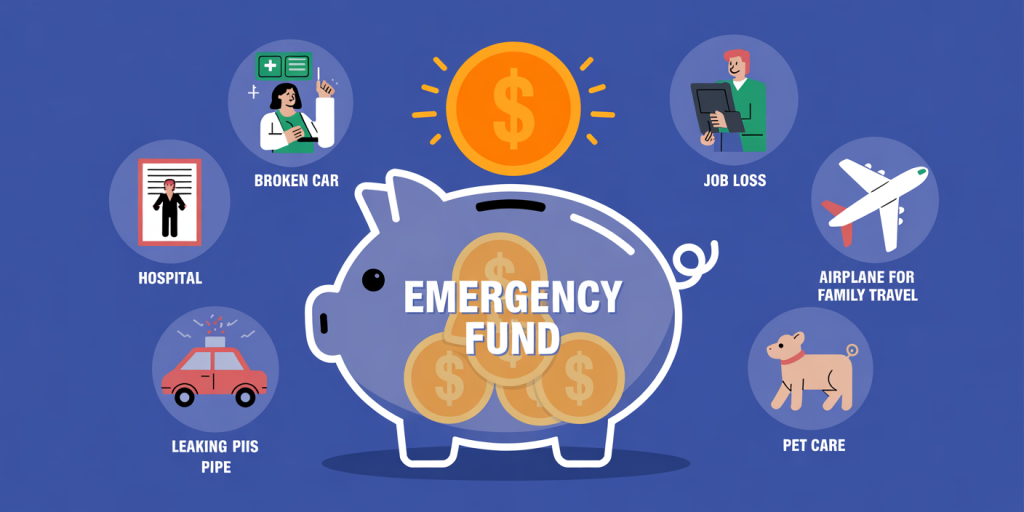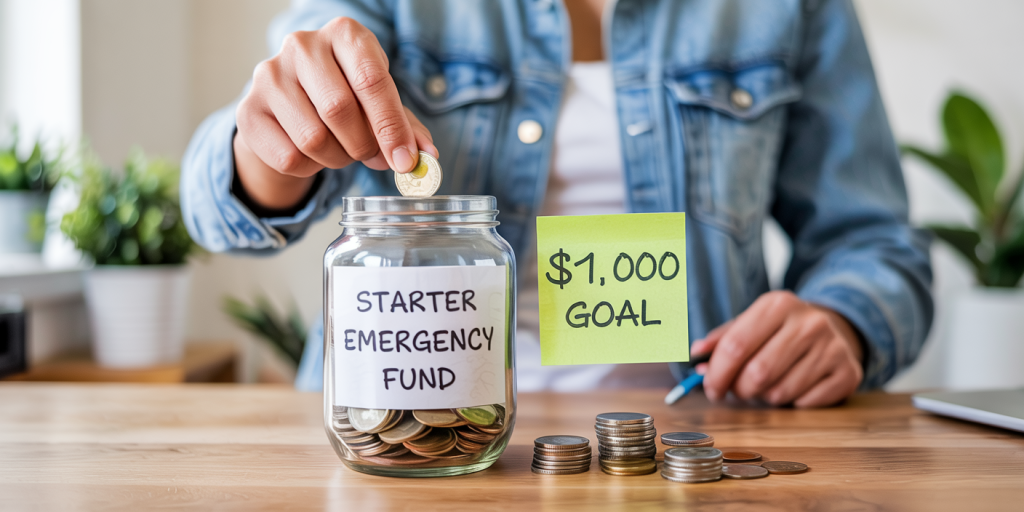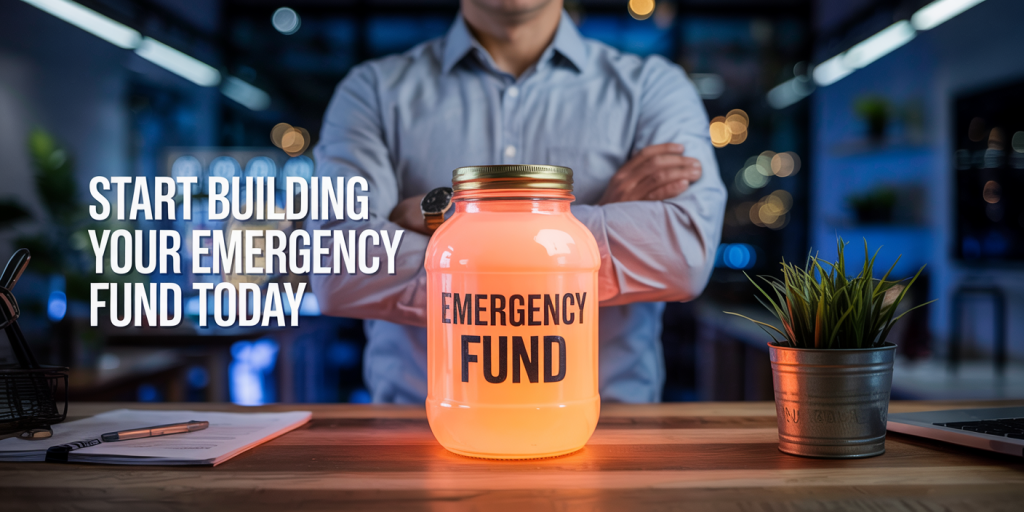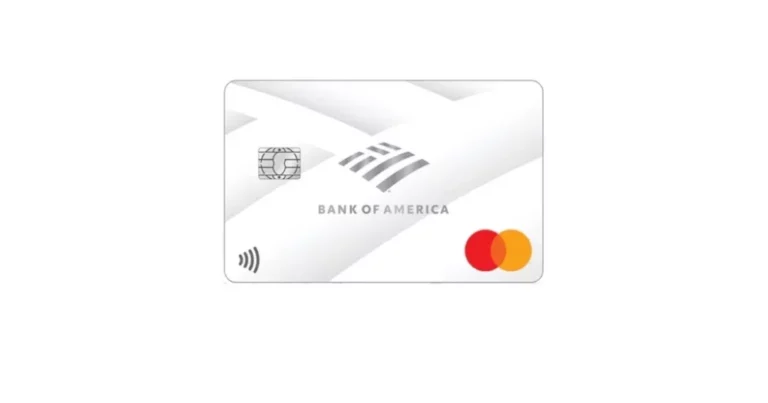Emergency Fund 101: How Much You Really Need and How to Build It
Anúncios
Financial emergencies are not a matter of if — but when. Whether it’s an unexpected medical bill, sudden job loss, or urgent car repair, these situations can happen to anyone. That’s where an emergency fund comes in. It is your financial safety net, designed to cover unexpected expenses without derailing your long-term goals or forcing you into debt.
This article will help you understand what an emergency fund is, how much you should save, where to keep it, and step-by-step strategies to build one — even if you live paycheck to paycheck.
What Is an Emergency Fund?
Anúncios

An emergency fund is a stash of money set aside specifically to cover unforeseen expenses or financial emergencies. This fund helps you stay afloat without relying on credit cards, loans, or borrowing from friends and family when unexpected costs arise.
Anúncios
Common uses for an emergency fund include:
-
Medical emergencies
-
Major car repairs
-
Home repairs (e.g., burst pipes, broken appliances)
-
Job loss or reduced income
-
Family emergencies or travel
-
Emergency pet care
An emergency fund is not for planned expenses like vacations, birthdays, or new gadgets. It’s strictly for true emergencies that you did not expect.
Why Is an Emergency Fund So Important?
-
Reduces financial stress
Knowing you have a financial cushion creates peace of mind. You won’t panic when your car breaks down or if you’re temporarily out of work. -
Prevents debt accumulation
Without an emergency fund, most people turn to credit cards or payday loans, which come with high interest rates and can trap you in long-term debt. -
Gives you flexibility
Having a safety net gives you more freedom to make smart decisions — like quitting a toxic job or saying yes to an unexpected opportunity — without immediate financial pressure.
How Much Should You Save?
The general rule of thumb is to save between 3 to 6 months’ worth of essential living expenses. But the actual number depends on your personal situation.
Factors to consider:
-
Do you have stable employment?
-
Are you the sole breadwinner?
-
Do you have dependents?
-
Is your income irregular (freelance or commission-based)?
-
Do you own or rent your home?
If your job is secure, and you have multiple sources of income, 3 months may be enough. But if you’re self-employed or have dependents, aim for at least 6 months — or even up to 12.
How to Calculate Your Emergency Fund Goal
Step 1: Add up your basic monthly expenses:
-
Rent or mortgage
-
Utilities
-
Groceries
-
Insurance premiums
-
Transportation
-
Minimum loan payments
-
Essential childcare or medical costs
Step 2: Multiply by the number of months you want to cover.
Example: If your basic monthly expenses are $2,500 and you want to cover 6 months:
$2,500 × 6 = $15,000 emergency fund goal
Where Should You Keep Your Emergency Fund?
Your emergency fund should be:
-
Easy to access
-
Safe from market risk
-
Separate from your everyday checking account
Best options include:
-
High-yield savings account: Offers better interest than traditional savings accounts while keeping your money liquid.
-
Money market account: Slightly higher interest rates with some check-writing capabilities.
-
Certificates of Deposit (CDs) laddered with short-term maturity: For portions of your fund that can be less liquid.
Avoid putting your emergency fund in stocks, crypto, or other volatile assets. The goal is not high returns — it’s stability and accessibility.
How to Start Building Your Emergency Fund

-
Set a realistic starter goal
If saving 3-6 months’ worth sounds overwhelming, start smaller. Even $500 to $1,000 can cover many basic emergencies. -
Automate your savings
Set up a recurring transfer from your checking account to your savings account right after payday. Even $50 or $100 per paycheck adds up over time. -
Use windfalls wisely
Tax refunds, bonuses, or birthday cash can give your fund a quick boost. Treat unexpected money as an opportunity to grow your safety net. -
Cut unnecessary expenses
Review subscriptions, dining out habits, or unused services. Redirect those savings into your emergency fund. -
Save “extra” paychecks
If you get paid biweekly, you’ll receive 3 paychecks in two months out of the year. Save that third paycheck when it comes around. -
Track your progress
Use a savings tracker or budgeting app to stay motivated. Watching the balance grow reinforces your commitment. -
Increase contributions gradually
As your income grows or you pay off debt, redirect that freed-up money to your emergency fund until it’s fully funded.
What If You Need to Use It?
Emergencies happen — that’s why the fund exists. Don’t feel guilty about dipping into it when you truly need to.
After the emergency passes, your focus should be on replenishing the fund. Go back to automatic contributions and treat it as a top priority.
Common Mistakes to Avoid
-
Using it for non-emergencies
Don’t use your fund for vacations, shopping sprees, or upgrading your phone. If it’s not urgent and necessary, it’s not an emergency. -
Keeping it in cash at home
Your fund should be safe and insured. Keeping large amounts of cash at home is risky due to theft or damage. -
Forgetting to refill it
Once used, many people forget to build it back. Make a plan to restore your fund as soon as possible. -
Ignoring small contributions
Even if you can only save $20 a week, it still matters. Small deposits add up over time.
Can You Have Too Much in an Emergency Fund?
Yes. While having a solid cushion is great, having too much in low-interest savings can lead to lost investment opportunities. Once you’ve hit your goal, consider redirecting extra savings into retirement accounts, a home down payment fund, or other long-term investments.
Emergency Fund for Freelancers and Gig Workers
If your income is variable or uncertain, your emergency fund becomes even more critical. Aim for 6 to 12 months of expenses and save aggressively during high-income months.
Also consider setting up a “mini emergency fund” for business-related expenses to cover unexpected equipment repairs or slow client periods.
Teaching Your Kids About Emergency Savings
It’s never too early to build good habits. Involve your children by showing them how you save for emergencies. Create a small savings jar for them, or use a child-friendly banking app to make the process visual and interactive.
Emergency Funds vs. Other Types of Savings
An emergency fund is only one part of your financial foundation. It’s different from:
-
Sinking funds: Planned expenses (car repairs, holidays)
-
Retirement savings: Long-term, not easily accessible
-
Investment funds: Growth-focused but not for emergencies
All serve a purpose, but your emergency fund should come first.
Final Thoughts

An emergency fund is not a luxury — it’s a necessity. In a world filled with financial uncertainty, having a cash reserve gives you peace of mind, financial independence, and resilience.
Whether you’re starting with $100 or aiming for $20,000, the key is to start now. Build slowly, stay consistent, and celebrate milestones. Your future self will thank you when life throws an unexpected curveball — and you’re ready for it.
Start building your emergency fund today. It’s one of the smartest financial moves you’ll ever make.

Post Comment